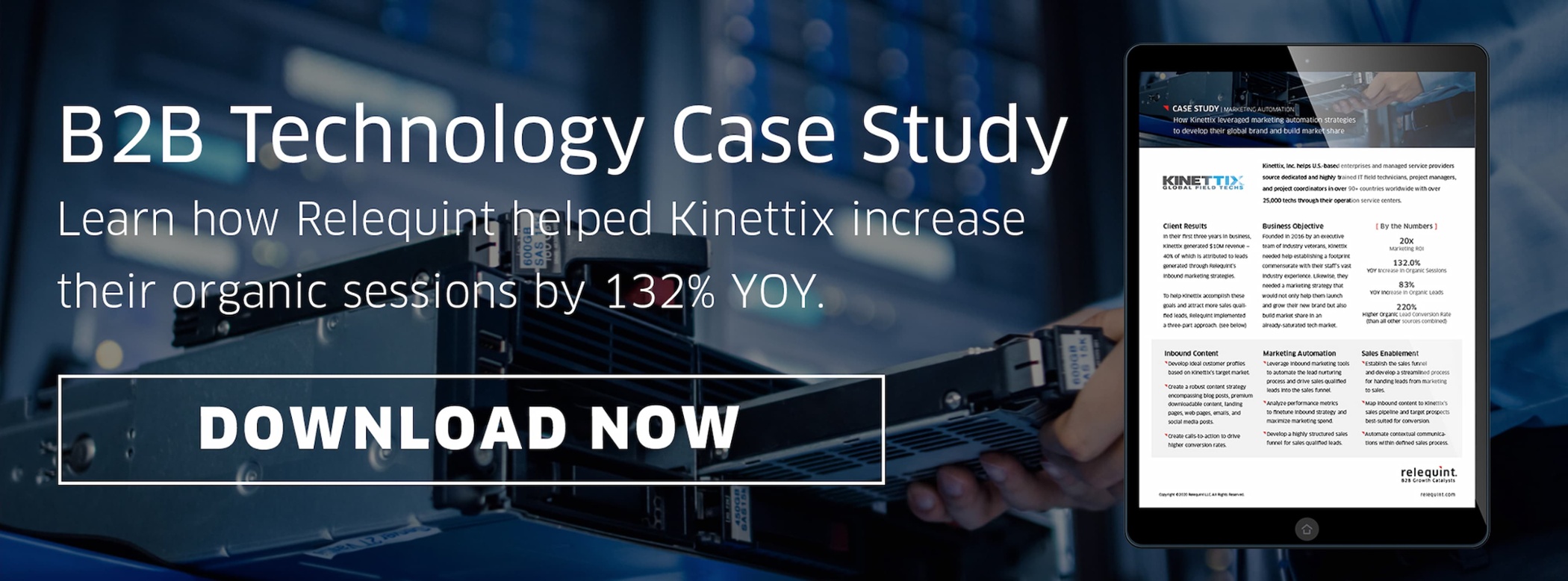Google continually updates its algorithm to improve the effectiveness of its search engine — which is great news for its users. As the algorithm improves, searchers are more likely to find what they’re looking for fast and have a positive experience while doing so.
These updates, though, can have a significant impact on search engine results pages or SERPs. B2B marketers need to be aware of changes to the algorithm to keep their site nimble and meet their KPIs.
The Impact of Google Updates
Google releases a significant update known as a "broad core" update a couple of times a year. With each update, Google deploys strategic, and most often, undisclosed changes.
These seek to "reward" helpful, relevant business websites that play by the rules and deliver an excellent user experience with a higher ranking. At the same time, this naturally demotes sites that are achieving visibility by attempting to manipulate the rankings or deliver a poor customer experience.
However, sometimes well-meaning websites can still get caught in the crossfire.
As a result, your B2B company may have recently seen some of your pages losing rank while others may have gained it. Your website traffic, conversion rate, and revenues may have also been impacted.
Either way, it's critical to dive into the impact Google Core Web Vitals Update has on the overall search results and your specific search engine optimization (SEO) KPIs.
About the 2021 Google Core Web Vitals Update
The latest update to Google’s Core Web Vitals began in early June 2021. Given the size of the update, developers rolled it out over several weeks. Google also announced that part of the update was not ready for the June rollout, so instead of holding up the whole process, they released it in two parts, with the second dropping in mid-July.
The expectation is that the update rollout will finish this month. However, we may see some significant fluctuations in rankings over the next several months.
What Is This Update Trying to Accomplish?
This most recent update focuses on the user experience (UX) side of search engine optimization. You've likely noticed many websites continue to hang out at the top of searches despite having horrible user experiences. They have load problems, jerky buttons and images, annoying ad formats, lack of mobile-friendliness, and disregard for visitor browsing safety.
The Google Core Web Vitals Updates attempts to measure the severity of these types of issues so that these do not end up at the top of searches. Google is doing this by continually improving how it measures three metrics that it added to Core Vitals in 2020:
- Largest Contentful Paint (LCP): Refers to load times.
- First Input Delay (FID): Refers to interactivity.
- Cumulative Layout Shift (CLS): Refers to visual stability while the site is rendering.
While these may seem like obvious SEO ranking factors every web developer and B2B marketer should be addressing, you'd be surprised at the number of websites that would get an "F" in one or more of these areas.
So, what is the expectation for each of these vital signs? If it’s performing well, your site should look something like this:
- LCP: 2.5 seconds or fewer
- FID: Below 100 ms
- CLS: Below .1
How This May Impact Your B2B KPIs
SEO volatility following the Google Core Web Vitals Update may stem from three primary factors:
- The update itself tweaks the "rules of the game” — sometimes slightly, sometimes in a big way.
- Reversals as the early part of the rollout may have one effect, while the latter reverses it.
- B2B websites adapt to the change after they see how it impacts their ability to meet their SEO, marketing, and sales KPIs.
As more businesses recognize the importance of meeting these standards, they will take action and rise in the ranks. But many "good" websites will ignore the change and see their rank continue to fall into the new year.
So it's critical to A) understand that some volatility is normal right now and B) depending on the direction your ranking is going post-update, you may need to revisit how well your website meets these standards and adjust.
Actions to Take Now As a B2B Business
If you already track these metrics through SEO tools, only use ones that identify areas for improvement — that way, you can take the necessary steps to adapt. If you're not currently using such tools, then you can take the following free steps right now to get an idea of where you stand.
- Identify where pages currently rank: To see the changes and understand how they impact other B2B KPIs, you need to know how pages rank now. Then, you can compare them to later dates. View page rankings in Google Search Console.
- Find out your page speed: Use Google's free PageSpeed Insights tool.
- Measure your Core Vitals on Google Chrome: Download Chrome and then use the Web Vitals Extension to test your web pages.
A more thorough website audit is undoubtedly advisable. And if you're not already, you need a clear system in place to monitor these changes and the impact of future Google updates on an ongoing basis.![]()







 By
By 
